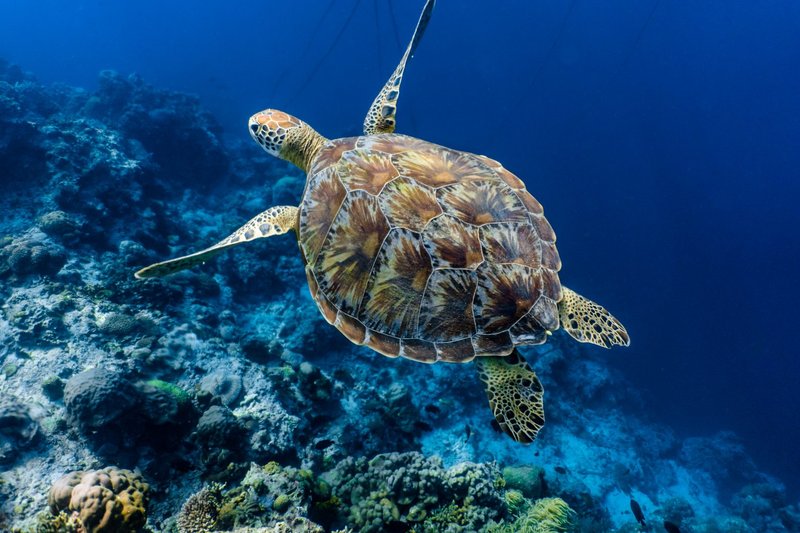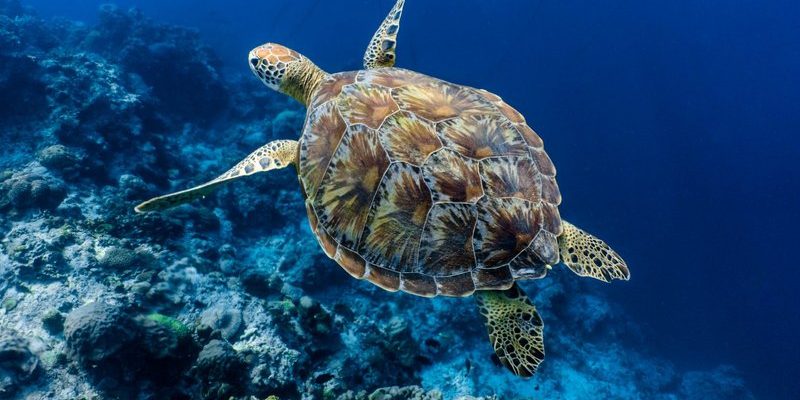
Imagine the ocean as a vast, interconnected world, with green sea turtles happily exploring various regions. They don’t just stick to one spot; instead, they travel across the seas to find food, mates, and the perfect nesting grounds. Understanding where green sea turtles are found is crucial not only for their conservation but also for appreciating our planet’s diverse marine life. So, let me explain the habitats that these gentle giants call home.
Oceans: The Primary Habitat of Green Sea Turtles
Green sea turtles primarily inhabit tropical and subtropical oceans worldwide. You might be surprised to know that they can be found in both coastal and open ocean waters, adapting to various environments. These turtles prefer warm waters, typically between 23°C to 29°C (73°F to 84°F), which is why they’re commonly spotted along coral reefs and seagrass beds.
In the eastern Pacific Ocean, you can find them around the Galápagos Islands and the coasts of Central America. These areas are teeming with seagrasses, which are their favorite food source. On the other side of the world, you’ll encounter them in the Caribbean Sea, the Gulf of Mexico, and along the coasts of Florida. Some of the most famous nesting sites, like Tortuguero in Costa Rica, provide safe havens for these turtles to lay their eggs each year.
The remarkable thing about green sea turtles is their migratory nature. They can travel thousands of miles between feeding sites and nesting grounds. You could think of them as the ocean’s gentle nomads, always in search of sustenance and safe places to reproduce.
Coastal Areas and Estuaries
When it comes to coastal habitats, green sea turtles thrive in shallow coastal waters, especially those rich in seagrass and algae. These areas serve as the perfect dining spots for them, filled with their favorite treats. Coastal areas also provide a refuge from bigger predators and a safe environment for young turtles to grow.
Estuaries, where freshwater meets saltwater, are especially important for juvenile turtles. They find ample food and protection from larger predators in these brackish waters. It’s like a safe playground for the little ones! Unfortunately, these habitats are often threatened by pollution, habitat destruction, and human activity. Protecting these areas is vital for the survival of green sea turtles and their unique ecosystems.
You might be wondering how these turtles manage to navigate between these habitats. They use a mix of environmental cues, like the Earth’s magnetic fields and the position of the sun, to guide them on their journeys.
Coral Reefs: A Feast for the Eyes and Stomach
Coral reefs are not just colorful underwater landscapes; they’re a crucial habitat for green sea turtles. These vibrant ecosystems are home to an abundance of sea life, including the algae and seagrasses that green turtles love to munch on. The reefs provide shelter and food, making them an essential stop for these turtles.
When green sea turtles visit coral reefs, they can often be seen grazing on the algae that grow on the reef surfaces. It’s like dining at an all-you-can-eat buffet! However, these reefs are under threat from climate change, pollution, and unsustainable fishing practices. Protecting coral reefs is vital not only for the survival of green sea turtles but for the entire ocean ecosystem.
The connection between green sea turtles and coral reefs is a beautiful example of how marine species depend on one another. Healthy reefs lead to healthy turtles, and vice versa. This interdependence highlights the importance of conserving marine habitats.
Nesting Sites: Where New Generations Begin
One of the most magical moments in a green sea turtle’s life is when female turtles return to nest on the same beaches where they were born. This nesting behavior is known as *natal homing*. The beaches they choose are often sandy, secluded, and undisturbed—ideal for laying their eggs safely.
Some of the most well-known nesting sites for green sea turtles include Hatchery Beach in Florida and the beaches of Hawaii. Here, females can lay anywhere from 100 to 200 eggs at a time! After about 60 days, the tiny hatchlings emerge and make their perilous journey to the ocean, facing numerous challenges along the way.
Unfortunately, many nesting sites are under threat from human development and environmental changes. Coastal development can lead to habitat loss and increased predation on eggs. Conservation efforts are critical to protect these vital nesting grounds, ensuring future generations of green sea turtles can thrive.
Rivers and Freshwater Areas
While it might seem surprising, green sea turtles can occasionally be found in freshwater habitats. In regions where rivers meet oceans, juvenile turtles sometimes venture into brackish waters. This can happen in places like the Amazon River delta or near mangrove forests.
These areas provide a unique food source and protective environment from predators. However, it’s rare to find adult green sea turtles in freshwater. They are primarily marine animals, preferring the salty embrace of the ocean. Nonetheless, the adaptability of these turtles showcases their resilience and ability to thrive in various environments.
It’s fascinating to think that green sea turtles, usually known for their oceanic adventures, can also explore rivers and lagoons. This adaptability helps them survive in different conditions, emphasizing their importance in various ecosystems.
Conservation Challenges and Efforts
Despite their incredible adaptability and resilience, green sea turtles face numerous challenges. Climate change, habitat loss, and pollution significantly threaten their survival. Rising sea levels affect nesting beaches, while ocean pollution can harm their habitats and food sources.
Conservation efforts are essential to ensure green sea turtles continue to thrive. Many organizations are working tirelessly to protect nesting sites, educate communities, and reduce plastic waste in the ocean. You might have seen beach clean-up initiatives where volunteers gather to pick up trash—these actions play a crucial role in maintaining healthy habitats for turtles and other marine life.
Community involvement is also vital. When locals participate in protecting natural habitats, it creates a sense of ownership and responsibility toward the environment. Encouraging sustainable tourism can also help raise awareness about the importance of preserving these beautiful creatures and their habitats.
Green sea turtles are majestic animals that can be found in oceans, coastal areas, estuaries, and even some freshwater habitats. Their journeys across vast distances remind us of the interconnectedness of our planet’s ecosystems. As charming as these turtles are, their survival relies largely on our commitment to protecting their habitats and ensuring they can continue their migratory patterns.
By understanding where green sea turtles are found and the challenges they face, we can work together to create a brighter future for these incredible creatures. Every little action counts, whether it’s reducing plastic usage or supporting conservation initiatives. Let’s be the voice for those who can’t speak for themselves and ensure that generations to come will continue to marvel at the beauty of green sea turtles in their natural habitats.

